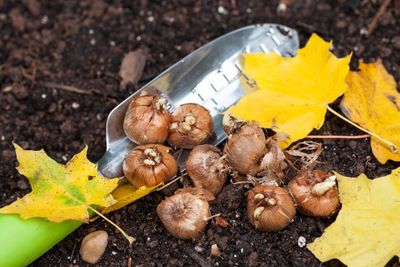About Zone 7 Flower Bulbs
Daffodils, tulips, fritillaria, lilies… the list could go on and on. Whether you prefer dish-sized dahlia or dainty grape hyacinths, there is a color and shape for every gardener. As a zone 7 gardener, you are especially lucky with the wide range of flowers that are hardy in the region. Time your bulb-planting activities correctly. The best times for planting bulbs in zone 7 are in the fall for spring bloomers and in spring for summer flowering varieties. Most reputable nursery centers or online garden sites carry a host of flowering bulbs for zone 7. The trick is picking out your favorites with all the cultivars in the market. Every species may have dozens of cultivars or more, in scores of tones. Outside of variety, choose bulbs that are large, free of blemish, and healthy. There are also hardy and tender bulbs. Tulips and daffodils belong in the first category while tender bulbs might be agapanthus or amaryllis. Pick out both spring and summer-blooming specimens. The foliage should be left on bulbs even after bloom so the bulb can store energy for future flowers. When spring-blooming greenery is all that remains, the summer flowering species cover up the area with color.
Flowering Bulbs for Zone 7
You can stick with the classics but it’s always fun to throw curve balls in the gardening scheme. Some of the hardy options might be:
Hardy lilies, like Asiatic lily Allium Galanthus Crocus Anemone
Tender but still worth growing are:
Widow’s Tears Caladium Peruvian Daffodil Tuberose
Really interesting and unique bloomers to try are Colchicum ‘Waterlily,’ Camassia, and Erythronium. Even the standard tulips have multicolored forms, frilled petals, double petals, and a wide range of sizes and colors. With zone 7 flower bulbs, it is easy to have fun in the garden and each season reveals a forgotten prize.
Caring for Zone 7 Bulbs
The first step to caring for bulbs starts with planting. Dig the bed deeply and make sure the soil drains well. Some gardeners recommend mixing bone meal into the soil prior to planting. Planting depth is also important. The rule is to dig the hole two to three times deeper than the largest diameter of the bulb for those 2 inches (5 cm.) or more. For small bulbs, three to four times greater than the diameter. Spacing varies with the species but is generally 1 to 2 inches (2.5-5 cm.). Most large plants can be standalone, but massing bulbs is an effective way to really make a statement. Make sure bulbs are installed upright, with soil packed in around them. Keep watered unless adequate rainfall occurs. Mulch over bulbs before cold temperatures appear. Lift and store tender bulbs in a cool location for wintering inside.
